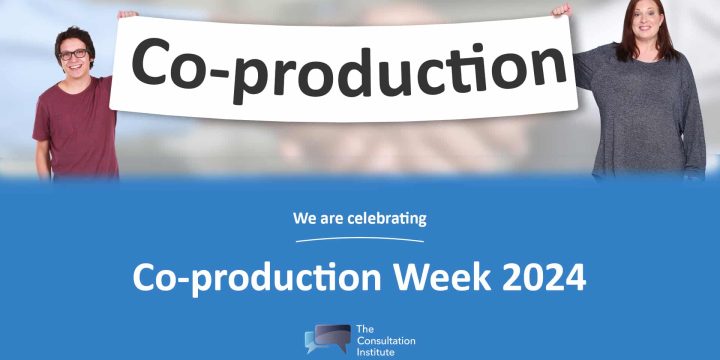News & Insights
Dealing with online conflict
The success of online dialogues will largely be determined by the quality of the participation achieved and the diversity of viewpoints presented over the course of the exercise. A key element in creating a civil environment is that the facilitator keeps the discussion focused on ideas and NOT individuals. While this may seem fairly self-explanatory, its importance can’t be underestimated.
It is safe to assume that people have good intentions, unless they have a history or pattern of aggression. However, everyone has their bad days, gets triggered, reacts insensitively, and writes an email without thinking it through completely.
Unless a post is clearly abusive or aggressive, it’s a good idea to clarify its intention. For example, facilitators could ask, “When you said…did you mean…or, what did you mean by…” Or, “when you said…I heard…is that what you meant?”. It is common that what we think someone said is not even close to what they meant to say. Giving participants the benefit of the doubt and the chance to be clear about what they meant will avoid over assertion.
For this reason, it is not always sensible to delete dubious content immediately until this feedback has been ascertained. It is worth trying to contextualise the indecent – for example, if the abuse is part of a larger trend or a one off, and if the content has bene replicated or become viral.
Facilitators should not retaliate or engage with abusive or aggressive content and be vigilant for posts that attempt to discredit others who have opposing viewpoints, through sarcasm, labelling, or by “attacking the messenger”.
Encouraging participants to take time before they respond to ‘emotive’ content is one way to diffuse a tense situation. A draft response can still be created to relieve stress but not posted straight away. Sometimes, first reactions are overly emotive and reading a response later, and sometimes a few times, can bring a new perspective. Facilitators should experiment by reading responses with different tones (matter-of-fact, gentle and non-critical) to see if it could have been written with a different tone in mind than the one initially heard.
Any comments that might be construed as a personal attack on another participant should be dealt with quickly. Generally, if there is a personal attack, it is a good course of action to email the offender, letting that individual know that he or she ‘broke a rule”, and then email the victim to let them know that the issue has been dealt with. In some cases, if the discussion is getting a little heated but hasn’t crossed the line yet, preventative action can do the trick.
A general post reminding people to keep focused on issues can be helpful. If an individual continues to engage in personal attacks after being warned by the facilitator, he or she should be removed from the discussion according to the procedures outlined in the rules.
Enforcing rules
It is worth remembering that participants are often engaging alone and rely entirely on words to interpret meaning, intent, and tone. Words must therefore be chosen carefully and thoughtfully. A number of techniques can help with drafting responses: –
- Place yourself in the other person’s shoes
How might they hear your message? To avoid unnecessary conflict or a lot of hurt feelings, it helps to take into account who you’re writing to. One person might be able to hear you say it exactly how you think it, and another person would be threatened by that style of communication. Think about the other person when writing your email or post. Do your best to communicate in a way that is respectful, sensitive, and clear to them. People often say, to do that feels like they’re being controlled and why shouldn’t they just write it the way they want to. Of course, you can write it any way you want, especially online, but if you want to communicate with this person and have them hear and understand what you’re saying, it helps to think about how they will hear it.
- Use emoticons to express your tone
In online communication, visual and auditory cues are replaced by emoticons, for example, smiles, winks, and laughter. It helps to use emoticons to convey your tone. Additionally, if you like the person, tell them! Having a conflict or misunderstanding doesn’t mean you don’t like the person any more, but people often forget that reality, or don’t think to say it. It may be most needed during a tense interaction.
- Start and end your post with positive, affirming, and validating statements
Say what you agree with, what you understand about how they feel, and any other positive statements at the beginning of your email. This helps set a positive tone. End on a positive note as well.
A summary of techniques for dealing with online conflict is provided below: –
- It’s generally better to deal with rules violations in private. Offenders are less likely to get defensive, if contacted politely and in private. Occasionally, though, some offences are extreme or widespread enough that it’s most efficient to tell people publicly what you’re doing about it. However, that should be the exception.
- When you’re penalising someone in a one-on-one debate with another member who has also broken the rules, let them each know the other is being disciplined so they don’t feel they are being unfairly singled out.
- Don’t hold grudges. Always discipline according to the rules. If you are angry over an incident, allow time to “cool down” before making a ruling (unless the situation is one that requires immediate attention).
- Feel free to use informal cautions as an alternative to formal warnings for lesser offences or first time offences. When you give a caution, let the participant know that multiple cautions can result in a formal warning.
- ALWAYS keep a record of your warnings and explicitly recount the offence and the specific rule that was broken. A good record will help justify a decision if the member appeals your decision. It will also help you keep track of dates and will help you be more objective in your decision-making.
- Any expulsion message should be saved and copied to your governing board or advisory committee. It should cite the offence and the rule and reference previous warnings if the list rules require multiple warnings for expulsion.
- Sometimes they are right. You have to accept, upon reflection, that you might have issued a warning incorrectly. You can rescind them. Also, respect your organisation’s view if you are overruled during an appeal.
This article appears on the Institutes Wiki page.



